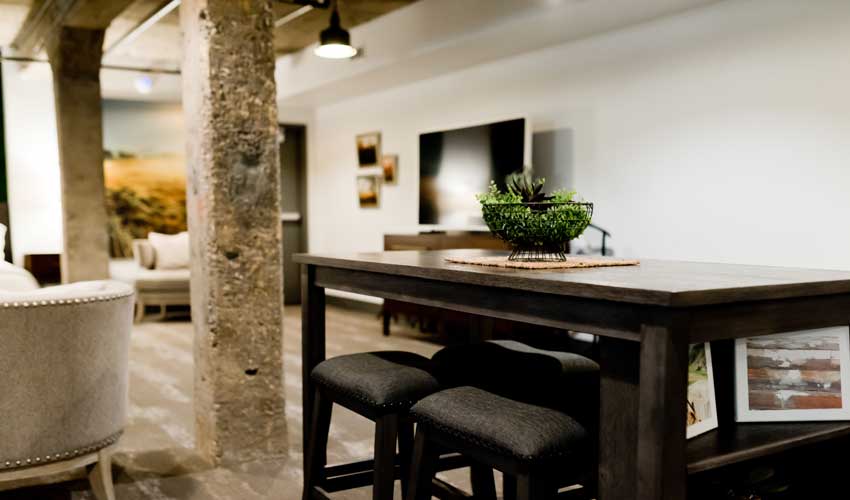Build a Waterproof Basement

Is a waterproof basement akin to the Holy Grail? Is it something to strive for but is not attainable? Water is the bane of most basements. It is such a persistent problem that many people choose to forego a basement all together simply because of their fear of ending up with a wet basement. The good news is you can have a waterproof basement. And it doesn’t even have to feel or smell damp. Best of all, you don’t need French drains and sump pumps to do it. Pumping the water out is not the way to go. The secret is to make sure water does not have a chance to enter the basement in the first place.
The first step to toward a waterproof basement is to determine if you are building in an area with a high ground water table. If you have suspicions of this, you can find out about the water table by asking neighbors what their experiences have been. However, a better way is to hire a soils engineer to dig test holes and test soils samples. Even if there is no water present at the time of the tests, the engineer can tell by the soil color and other characteristics what level the water has come to in the past. This is the seasonal high water table. When building a waterproof basement, you must set the floor level of the basement above this elevation, if at all possible. If not, even the most aggressive waterproofing system will be challenged to keep water out. You will be building what amounts to a reverse swimming pool. The water on the outside of the basement will be higher than the basement floor and constantly trying to get in. Gravity will not help drain the water away from foundation because with a high water table, it will have nowhere to go.
The next step in building a waterproof basement is to install drainage beneath the floor slab as well as outside the perimeter walls. Use gravel without stone dust beneath the slab and at the bottom of the trench around the perimeter walls. You want to have spaces between the stones to allow the water to move through it. Porous piping (pipes with slots or holes) should be embedded in the gravel layer and in the trench outside the basement walls. This will let water that migrates through the soil continue through the stones and into the pipe. The pipe should be installed carefully so that it slopes to drain out to either an outfall at an elevation lower than the basement or to an external sump with a pump to lift the water up and out to the ground surface.

The exterior areas of your basement walls that will end up buried below the finished grade must be coated with a high-grade waterproofing system such as Tuff-n-Dri should be applied. The old fashion, paint on black mastic is not good enough. The best of these systems coats the wall with a 40 mil. asphalt emulsion that sets up to a rubbery consistency. Over that, a semi-rigid board of pressed fiberglass is placed. This board helps insulate the wall. But more importantly, it acts as a drain, breaking up the hydrostatic pressure and allowing the water to drain down to the foundation drain system. Do not let your contractor talk you into a lesser system. If you end up building a basement that leaks later, the repairs will be very costly and difficult. If you’re serious about building a waterproof basement, built it right the first time.
Once you have implemented these drainage and waterproofing strategies, the final steps toward a waterproof basement is to create a proper finished grade around your house and install gutters and downspouts. It stands to reason that the less water you allow to puddle against your house, the more effective your basement waterproofing will be. Make sure the soil next to the house is sloping away from the walls. Keep in mind that the soil that was backfilled against the house will settle after construction. That settlement can keep happening for a couple of years after the construction is complete. It’s a good idea to build the soil up a few inches higher than where you would ultimately like it to be so that after it settles, the slope will still be away from the house. Make it a habit to check the grade a couple of times a year, just to be sure it hasn’t settled too much and created a place for water to pool.
That takes care of the outside of the basement. But there are still things you can do inside your basement to avoid musty, damp air. Plus, your basement can help reduce your heating and cooling costs.
I hope this information is helpful to you. You might want to get yourself a copy of my best-seller, Designing Your Perfect House. It is chockfull of valuable tips and advice that will save you many times the cost of the book on your house building or remodeling project. You might also like The Well-Centered Home: Simple Steps to Increase Mindfulness, Self-Awareness, and Happiness Where You Live. It will show you how to make your home a happy place.

